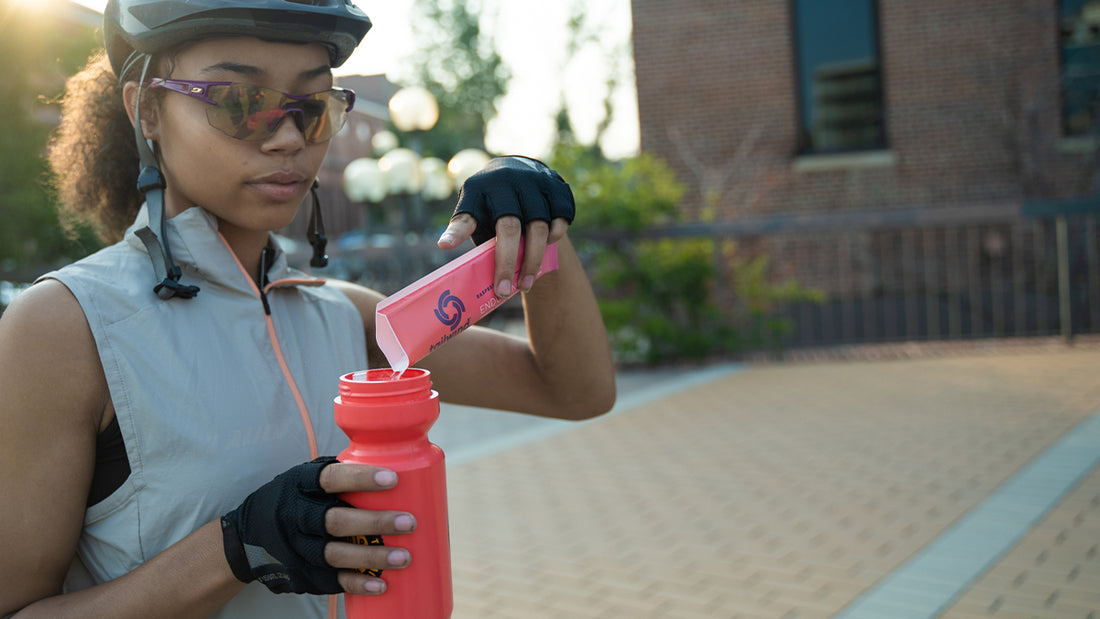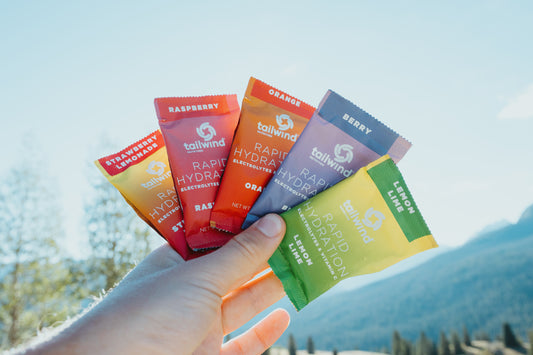Fueling with Simple Carbs
125 Comments
By Art Zemach, M.D.
Simple Carbs & Exercise
“Is sugar (a simple carbohydrate) good or bad for athletes?” For me, this is a “fire shark” question. When my kids were little, they would ask me “Dad, would you rather be burned by fire, or eaten by sharks?” The truth is I would like to live. A “fire shark” question is framed in such a way as to obscure the truth. The truth is: sugar is a powerful fuel during exercise, and terrible for you when you’re resting on the couch.
The Difference Between Exercise & Rest
All carbohydrates, from kale to candy, are converted into simple sugars before they’re used by your muscles. If that process happens quickly, they’re good exercise fuels. If it happens slowly, they’re healthy dinner foods. Carbohydrates can be one or the other, but it’s difficult for them to be both.
When you’re exercising, your muscles can take in energy easily, making simple sugars (dextrose & sucrose) the best fuel choice because they act quickly. They don’t ask your digestive system to do a lot of work when your body is under stress, and therefore they don’t bother your gut or make your stomach hurt.
When you’re not exercising, your muscles need insulin’s help to take in energy. During periods of inactivity, complex carbohydrates, like broccoli or kale, are the best fuel choice. Simple sugars at rest will take your hormones and blood sugar on a roller coaster ride that is hard on your body in a number of ways. When you’re sitting on the couch, candy and sugary drinks will increase your risk for obesity, diabetes and heart disease.
Get the Timing Right!
When you’re exercising or racing, it’s important to give your body time to make a definitive transition between rest physiology and exercise physiology.
Give your body 20-30 minutes for muscles to utilize glucose without the assistance of insulin and for exercise hormones to suppress insulin secretion before you begin drinking your sports drink. In other words, wait about 30 minutes before consuming Endurance Fuel during exercise.
Sip your drink slowly and spread your carbohydrate intake over each hour. Don’t down an hour’s worth of sport drink all at once.
What About Recovery?
The first 30-60 minutes after exercise is often called the “golden hour,” when your body is especially efficient at replenishing depleted energy stores.
In addition to during exercise, the golden hour is another time when simple sugars work well, and don’t cause blood sugar spikes and crashes. Replenishing your glycogen stores efficiently will help make you feel better quicker after your workout, and you’ll be ready for your next workout sooner.
Tailwind Recovery Mix is packed with the simple sugars your body needs to replenish glycogen stores during the 30-60 minute golden hour.
The Take-Home Message
Exercise and rest are different. Simple sugars are great exercise fuels, but they’re bad for you when you’re sitting on the couch. Broccoli is great for dinner, but it’s not a great racing fuel.
See you on the trails!






125 comments
Great products and great information. Thanks for the post.
I use tailwind on my long runs. It keeps me fueled with no GI issues. Great taste too.
Love the unflavored Tailwind. It allows me to add other mixes to achieve a more varied flavors.
Caffeinated Cola ftw…
Tailwind has been the only fuel and recovery that I trust and have never tired of after almost 10 years ❤️